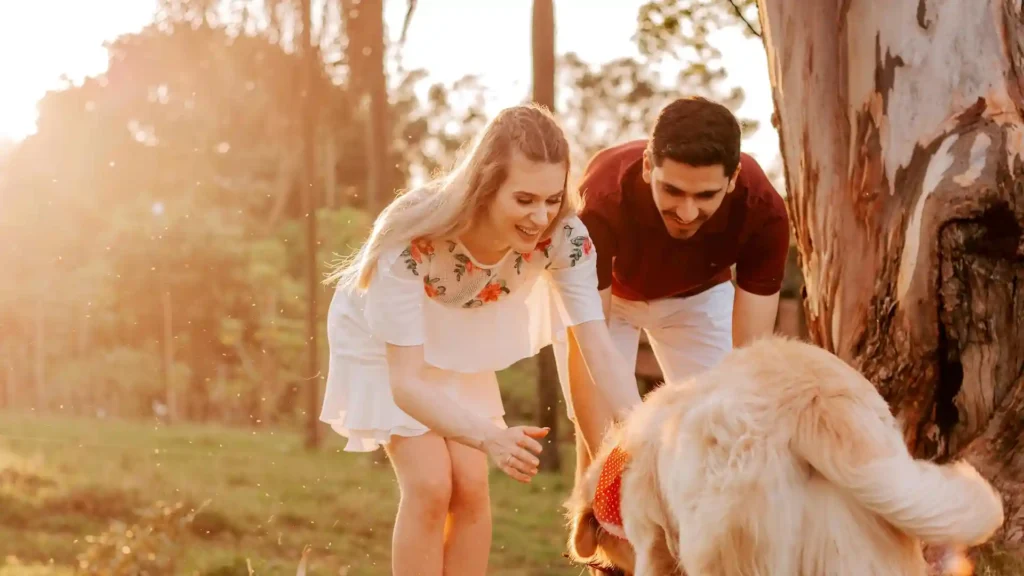What is Human’s best friend? Dogs are often referred to as “man’s best friend” for good reason. Their loyalty, affection, and companionship bring immense joy to millions of households around the world. However, being a responsible dog owner requires more than just providing food and water. It involves a long-term commitment to their health, well-being, and happiness. Let’s explore how to take care of your dogs, from their basic needs to their emotional and physical health.

Provide Proper Nutrition
Just like humans, dogs need a balanced diet to stay healthy and thrive. The right food can influence their energy levels, coat condition, and overall well-being.
- High-Quality Dog Food: Choose dog food that is appropriate for your dog’s age, breed, and health condition. Puppies, adult dogs, and senior dogs all have different nutritional requirements. Look for high-quality dog foods that list meat as the first ingredient, with a good balance of proteins, fats, and carbohydrates.
- Portion Control: Overfeeding or underfeeding can lead to serious health problems, such as obesity or malnutrition. Use the serving guidelines on the food package and adjust based on your dog’s activity level and metabolism.
- Fresh Water: Always ensure your dog has access to clean, fresh water. Dehydration can lead to a host of issues, including kidney problems and lethargy.
- Special Diets: If your dog has food allergies, sensitivities, or health issues (like diabetes or kidney disease), consult your vet for specific dietary recommendations.
Routine Vet Visits
Regular veterinary care is essential to ensure your dog remains healthy throughout their life.
- Vaccinations: Puppies need to receive a series of vaccinations during their first year to protect them from serious diseases like parvovirus, distemper, and rabies. Adult dogs require booster shots to maintain immunity.
- Parasite Prevention: Fleas, ticks, and heartworms are common parasites that can harm your dog. Talk to your vet about preventive treatments like flea and tick medications, as well as heartworm prevention.
- Annual Check-ups: Regular vet visits help detect early signs of health issues such as arthritis, dental disease, or infections. An annual check-up typically includes a physical exam, blood work, and possibly vaccinations.
- Dental Care: Dental health is often overlooked but is critical for your dog’s overall health. Brushing your dog’s teeth regularly and providing dental chews can help prevent gum disease and tooth decay.
Exercise and Mental Stimulation
Let your dogs to have some physical activities. Dogs need both physical and mental exercise to stay fit and happy. Without sufficient activity, they may become bored, anxious, or develop behavioral problems.
- Physical Exercise: Most dogs require at least 30 minutes to 2 hours of exercise each day, depending on their breed and energy level. Active breeds like Border Collies and Labrador Retrievers require more vigorous exercise, such as running, hiking, or playing fetch, while smaller or less active breeds may be content with short walks.
- Mental Stimulation: In addition to physical exercise, dogs need mental challenges. Toys, puzzle feeders, and training exercises can help keep your dog’s brain engaged. Teaching your dog new tricks or commands is a great way to bond while providing mental stimulation.
- Socialization: Expose your dog to different environments, people, and other dogs to ensure they are well-adjusted and confident. Proper socialization can prevent behavior problems like fearfulness or aggression.
Grooming and Hygiene
Dogs, particularly those with long or thick coats, need regular grooming to keep their fur clean and healthy.
- Brushing: Regular brushing helps prevent matting, reduces shedding, and promotes healthy skin. The frequency of brushing depends on your dog’s coat type. Long-haired dogs may need daily brushing, while short-haired dogs can typically be brushed once a week.
- Bathing: Dogs should be bathed as needed—usually every 4-6 weeks—but avoid over-bathing as it can dry out their skin. Use a dog-specific shampoo to ensure their skin’s natural oils aren’t stripped away.
- Nail Clipping: Keeping your dog’s nails trimmed is important to avoid discomfort or injury. If you’re unsure how to trim nails, ask your vet or groomer for guidance. Overgrown nails can cause joint problems or even grow into the paw pads.
- Ear and Eye Care: Regularly check your dog’s ears for signs of infection, wax buildup, or irritation. Some dogs are prone to ear infections, especially breeds with floppy ears. Clean ears with a vet-recommended ear cleaner if needed. Additionally, gently wipe around your dog’s eyes with a damp cloth to prevent discharge buildup.
Training and Behavior Management
Training is crucial to ensure your dog is well-behaved and safe, both at home and in public.
- Basic Commands: Start training your dog early, teaching them basic commands such as “sit,” “stay,” “come,” and “leave it.” Positive reinforcement, using treats or praise, is a great way to encourage good behavior.
- Crate Training: Crate training is a valuable tool for housebreaking and providing your dog with a safe, secure space when you’re not around. It can also be helpful during travel or when taking your dog to the vet.
- Behavioral Issues: If your dog is exhibiting behavioral problems, such as excessive barking, chewing, or separation anxiety, consider working with a professional dog trainer or behaviorist. Addressing these issues early can prevent them from escalating.
Providing Emotional Support and Companionship
Dogs are social animals and need emotional stimulation and companionship. A dog that is left alone for long periods can become lonely, anxious, or depressed.
- Bonding Time: Spend quality time with your dog every day. This includes playing, cuddling, or simply sitting together. Dogs thrive on attention from their owners.
- Separation Anxiety: If your dog experiences separation anxiety, work on desensitizing them to your absence by gradually increasing the time you’re away. You can also provide them with safe toys or treats to keep them occupied while you’re gone.
- Comfort and Security: Provide a comfortable bed or crate where your dog can retreat when they need rest or feel stressed. Dogs also benefit from a consistent routine, which helps them feel secure and confident.
Adapting Care for Different Life Stages
As dogs age, their needs will change. Here’s how to care for them at different life stages:
Puppy Stage (0-1 year): Puppies require extra training, socialization, and nutrition to grow into well-adjusted adults. They also need frequent vet visits and vaccinations.
Adult Stage (1-7 years): Adult dogs need consistent exercise, a balanced diet, and mental stimulation. Regular vet check-ups remain important for maintaining health.
Senior Stage (7+ years): Older dogs may need special care, such as joint supplements, a modified diet for weight management, and regular veterinary exams. They may also slow down, so adjust their exercise routine accordingly.
Taking care of a dog involves more than just feeding and walking them. It’s a commitment to their overall well-being, including their physical health, emotional needs, and mental stimulation. By providing your dog with proper nutrition, regular veterinary care, adequate exercise, grooming, and affection, you’ll help them lead a long, healthy, and happy life.
Whether you’re a first-time dog owner or a seasoned pet parent, these tips will guide you in giving your dog the love and care they deserve. Remember, every dog is unique, so be sure to observe your pet and adjust their care routine as needed.




